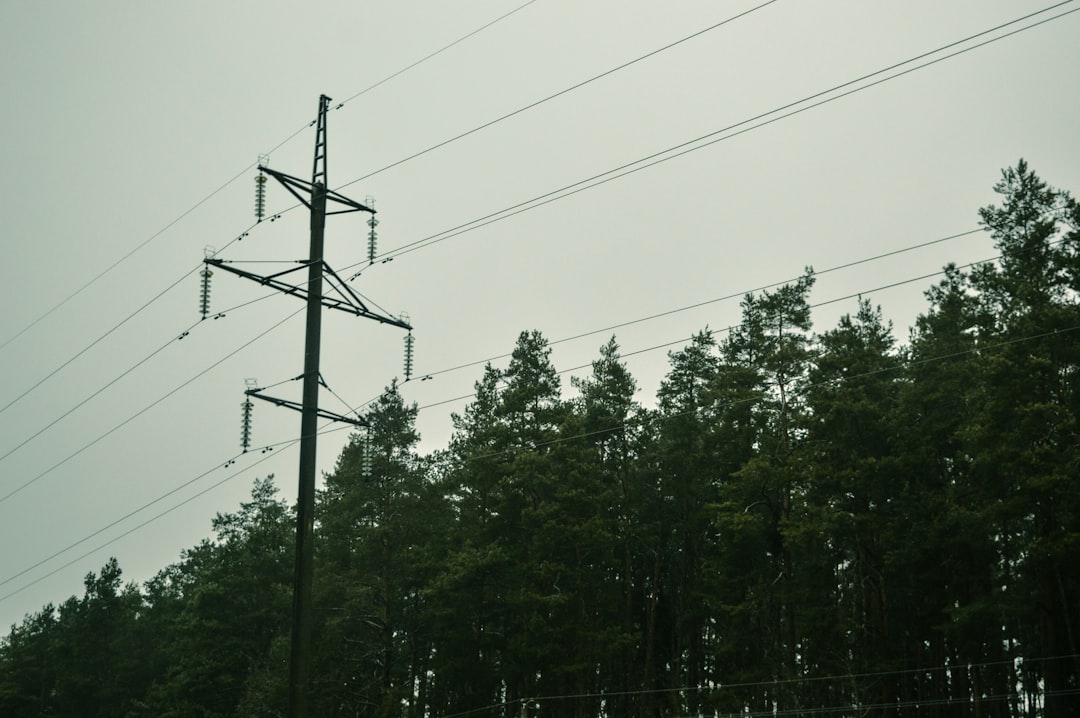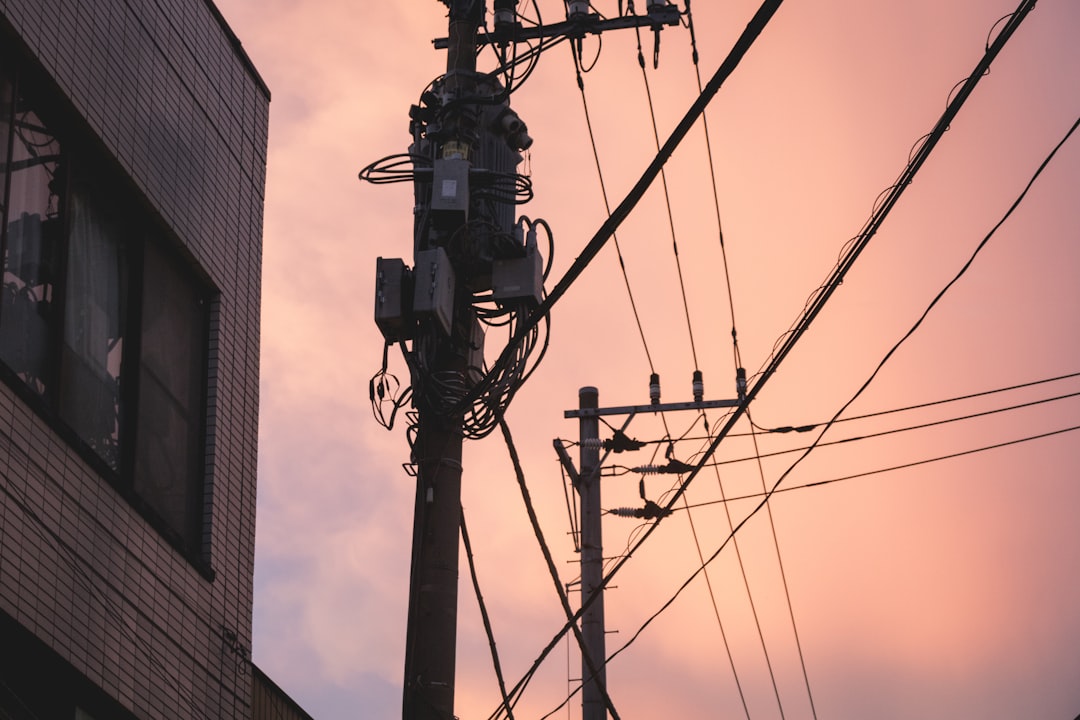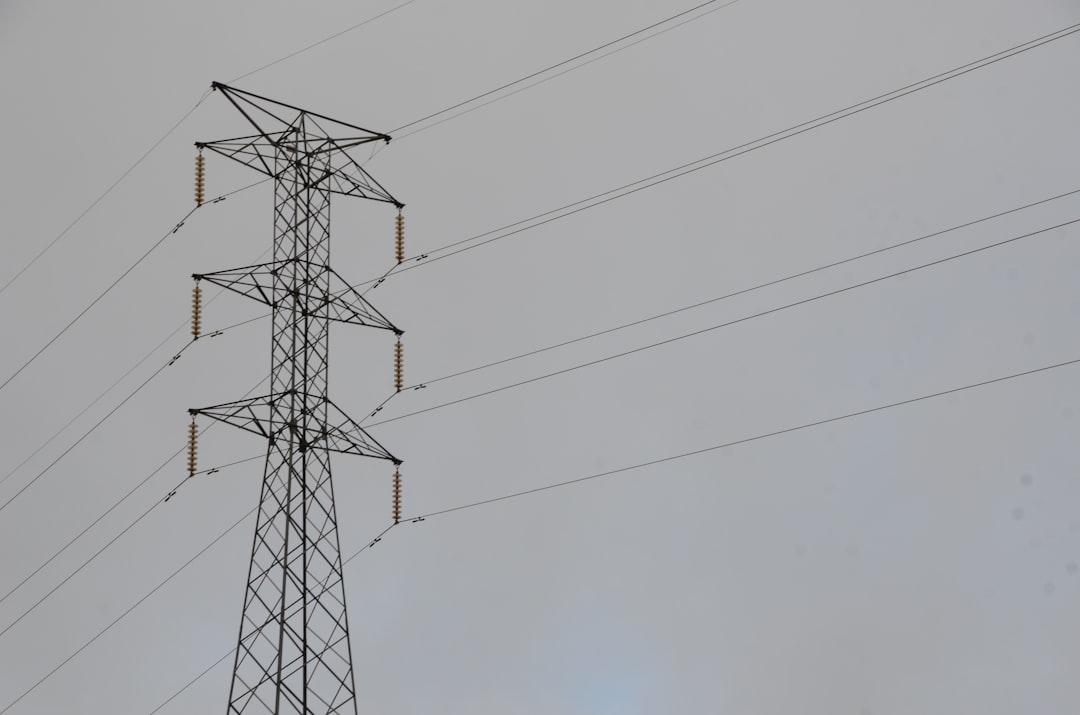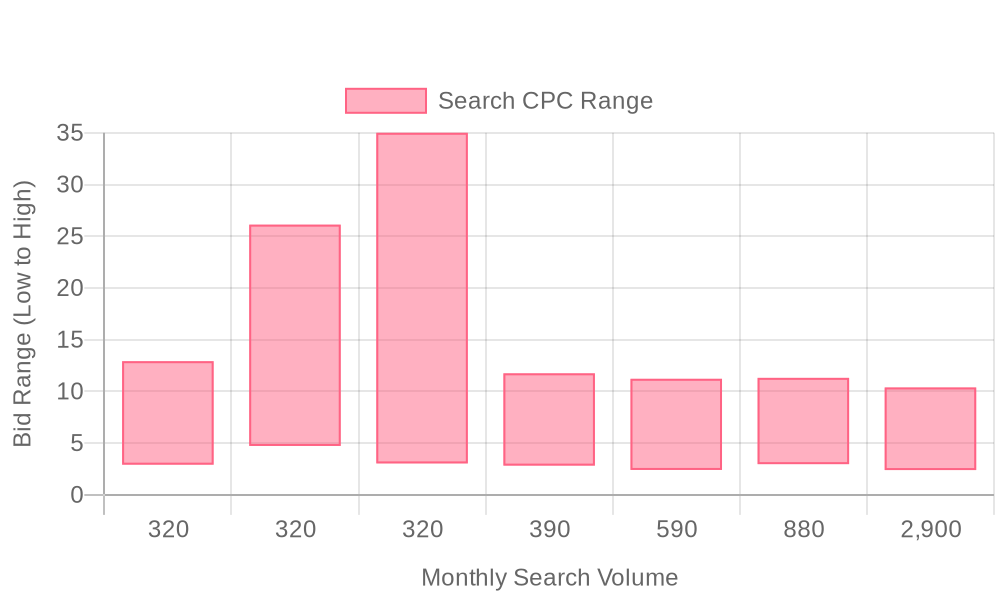
Supercharge your lead generation with a FREE Google Ads audit - no strings attached! See how you can generate more and higher quality leads
Get My Free Google Ads AuditFree consultation

No commitment
Supercharge your lead generation with a FREE LinkedIn Ads audit - no strings attached! See how you can generate more and higher quality leads
Get My Free Google Ads AuditFree consultation

No commitment
Supercharge your lead generation with a FREE Meta Ads audit - no strings attached! See how you can generate more and higher quality leads
Get My Free Google Ads AuditGet My Free LinkedIn Ads AuditGet My Free Meta Ads AuditFree consultation

No commitment
Supercharge your lead generation with a FREE Google Ads audit - no strings attached! See how you can generate more and higher quality leads
Get My Free Google Ads AuditFree consultation

No commitment
In today's competitive utility locating landscape, leveraging Google Ads effectively can significantly enhance visibility and attract more local clientele. However, many businesses face challenges such as missing high-value prospects because they're not tracked, and late capture of lead information can allow competitors to gain the upper hand. With precise targeting, measurement, and ROI tracking, businesses in the utility locating services can intercept critical decision-makers at the exact moment they're searching for specialized solutions. This guide will walk you through the best practices and advanced strategies for utilizing Google Ads within your utility locating services marketing mix, including insights on how modern tools like Sona enhance data integration and lead qualification without being just another hurdle for your marketing team.

Utility locating services operate in a complex, high-stakes environment where precision and speed drive business value. Digital advertising, when aligned with market realities, delivers a clear advantage by connecting specialized providers with construction firms, municipalities, and contractors seeking reliable underground detection. For a look at best practices tailored to the industry, see this Google Ads for utility locating resource.
A data-driven Google Ads approach is essential for capturing high-value jobs and filtering out low-intent inquiries. Modern B2B teams require immediate insight into which accounts are engaging, what intent signals are surfacing, and how to prioritize marketing investment for maximum impact. Discover more strategies in our blog on measuring marketing's influence.
Utility locating businesses thrive when every lead is traceable from ad click to closed job. Integrating CRM systems with Google Ads allows teams to track each inquiry’s journey, matching ad spend directly to revenue outcomes. With identified accounts, marketers can move beyond anonymous clicks to pinpoint organizations with active projects, drastically improving follow-up and qualification. Real-time syncing between Google Ads, Salesforce, and other platforms ensures that high-intent leads move seamlessly into sales outreach without delay, eliminating the risk of missed opportunities due to slow manual processes.
Utility locating campaigns demand keywords that reflect urgent business needs and local project specifics. By leveraging real-time audiences that update as leads engage across digital touchpoints, you can ensure campaigns focus budget on companies actively planning excavations or site development. For further keyword research, use the Google Ads Keyword Planner.
Conversion rates skyrocket when ad messaging, landing pages, and CRM workflows are tightly integrated. For utility locating advertising, this means ad creatives should speak directly to pain points—such as project delays and regulatory penalties—while landing pages reinforce expertise with case studies, certifications, and rapid response CTAs. When a prospect submits a request, buyer journeys and enriched lead data flow into your sales system, triggering immediate engagement from your team. For actionable frameworks, explore our playbooks for demand generation.
Utility locating marketing strategies benefit from a unified view across channels. By combining Google Ads targeting for services with social, programmatic, and content marketing data, teams spot patterns that reveal which sources and messages produce the most valuable deals. Predictive analytics enable you to anticipate future demand and reallocate budget to the audiences most likely to convert, powering sustainable, data-backed growth for digital marketing for utility services. To see how this works in practice, get started for free with Sona and optimize your marketing outcomes.

Utility locating services face distinct market pressures where every project lead can mean a significant contract. Google Ads enables these businesses to intercept prospective clients at the exact moment they search for emergency detection or pre-construction mapping, minimizing missed opportunities and increasing win rates for high-value projects.
The immediacy of online advertising for utility locating allows firms to respond quickly in situations where timing is critical, such as urgent excavations or infrastructure emergencies. By leveraging Google Ads for Utility Locating Services, providers ensure their solutions appear before potential clients while competitors are still cold-calling or waiting for referrals. For more insights into marketing strategies that drive pipeline, explore our B2B marketing blog.
Precision targeting in Google Ads empowers utility locating businesses to reach new markets or underserved geographies without the inefficiencies of blanket advertising. Campaigns can be calibrated to only appear in regions with available crews, meaning marketing dollars are allocated efficiently and buyer journey data remains actionable and centralized.
Integrating campaign data with CRM systems allows every inquiry to be tracked from initial click through contract signature. With dynamic audience syncing, marketers can automatically update and retarget high-value leads as they progress through the sales funnel, ensuring no prospect slips through the cracks and all online and offline engagements are attributed accurately.
This unified approach streamlines utility locating marketing strategies, making Google Ads not just a channel for immediate lead generation but a long-term driver of utility locating business growth and operational efficiency. To see the impact for yourself, get started for free with Sona.

Ready to optimize your campaigns and accelerate qualified lead generation? Get started for free with Sona.

Proactive utility locating businesses can accelerate market share by deploying strategies grounded in data and intent signals. Focusing on high-value segments minimizes wasted spend and positions your services ahead of shifting demand curves.

Precise audience segmentation is essential for utility locating services aiming to maximize the impact of Google Ads campaigns. By leveraging CRM data and real-time digital signals, marketers can identify the most relevant business segments—such as utilities, construction management firms, engineering consultancies, and municipal agencies—ensuring ad spend is directed where it delivers the greatest value. This strategic clarity empowers teams to tailor outreach, align messaging, and deliver highly relevant offers that resonate with each segment’s current needs.
Aligning segmentation with each stage of the customer journey unlocks more opportunities for engagement and conversion. For example, integrating dynamic data enables marketers to distinguish between prospects seeking emergency location services and those researching scheduled maintenance or long-term infrastructure projects. Applying layered intent signals ensures that no lead opportunity is missed due to outdated or incomplete information, as audience segments automatically update when new buying signals are detected.
Ad groups become significantly more effective when creative, offers, and calls to action are customized to each segment’s pain points and purchasing triggers. For utility locating services, this approach could mean highlighting rapid response times and compliance expertise for emergency requests, while showcasing technical accuracy and comprehensive reporting for planned construction partners. Regularly updating these segments based on evolving CRM and digital engagement data keeps campaigns sharply attuned to the market. Learn more about optimizing Google Ads location targeting to further enhance your PPC strategy.
Real-time intent validation, powered by platforms like Sona, ensures that only high-probability leads receive the most aggressive budget allocation and personalized messaging. By syncing enriched audiences and lead data into Google Ads and major CRM systems, teams can close the loop between online engagement and offline outcomes. This approach not only improves targeting accuracy but also streamlines campaign management, allowing sales and marketing teams to focus on high-value accounts as they progress through the funnel. Ready to elevate your audience segmentation? Get started for free with Sona.

| Industry | Keyword | Monthly Search Volume | Competition Level | Low Bid | High Bid |
| Utility Locating Services | private utility locator near me | 320 | MEDIUM | 2.92 | 12.92 |
| Utility Locating Services | water line locator service near me | 320 | HIGH | 4.73 | 26.12 |
| Utility Locating Services | water main leak detection | 320 | HIGH | 3.04 | 35 |
| Utility Locating Services | underground utility locating services | 390 | LOW | 2.83 | 11.75 |
| Utility Locating Services | private utility locating companies near me | 590 | MEDIUM | 2.41 | 11.22 |
| Utility Locating Services | private utility locating | 880 | LOW | 2.97 | 11.31 |
| Utility Locating Services | utility locating services | 2900 | LOW | 2.4 | 10.38 |
Developing a high-impact keyword strategy is fundamental to maximizing the effectiveness of Google Ads for Utility Locating Services. An advanced approach begins by prioritizing high-volume, high-intent keywords such as "utility locating services near me" or "underground utility detection." These phrases directly reflect urgent searcher needs and capture local buyers ready to engage. Using up-to-date keyword research tools, marketers can continuously refine and expand their lists as new trends and regional terminology emerge. To dive deeper into tactical approaches, review our B2B marketing reports guide for actionable templates and KPIs.
Targeting long-tail keywords that specify service types or unique situations, like "private fiber optic line locating" or "emergency gas line detection," allows utility locating businesses to align messaging with niche demand. These terms attract highly qualified prospects who know exactly what service they require, reducing wasted spend and boosting Quality Scores. When data from CRM and previous campaign performance is integrated, it becomes possible to surface related long-tail opportunities that might otherwise go unnoticed. The Sona platform can help by building dynamic, intent-driven audience segments that sync directly with your ad platforms.
Implementing robust negative keyword lists is equally critical. By filtering out irrelevant searches such as "utility locating jobs," "DIY line marking," or unrelated industries, marketers minimize budget loss and avoid low-quality leads. The most effective teams leverage CRM-enriched insights to identify patterns in unqualified traffic, using this intelligence to update negative lists in real time. With the right platform, these negative keywords can be applied dynamically as new data flows in, further optimizing spend and targeting precision. Explore our playbook on buying stage segmentation to refine your approach.
Modern search insights tools provide a competitive edge by surfacing intent signals and search term trends that are invisible to static keyword planners. These tools enable marketers to spot shifts in local demand, competitor movements, or seasonal spikes, allowing for proactive adjustments to keyword portfolios. When seamlessly connected to ad platforms and CRM systems, audience segments update automatically as leads progress or change status. This real-time sync not only tightens targeting but also helps focus budget on accounts with heightened purchase intent. Get started for free with Sona.
Modern utility locating companies face fierce competition and complex buying cycles, making precision in digital advertising essential. Success hinges on campaigns that adapt in real time to shifting market demand, turn website activity into actionable leads, and consistently drive measurable outcomes.
Top performers in utility locating advertising focus on unifying intent data signals, enriching lead profiles, and aligning every stage of the campaign to genuine project needs. This step-by-step framework delivers a clear, practical path to higher-quality conversions and sustainable business growth in Google Ads for Utility Locating Services.
Effective keyword lists are the backbone of any high-performing Google Ads strategy for utility locating services. Start by mapping out specialized, industry-specific search terms that capture both technical needs (“private utility location,” “GPR scanning”) and urgent project intent (“emergency utility detection,” “same-day underground marking”). As utility locating demand fluctuates with construction cycles and regulatory deadlines, real-time updates to keyword portfolios are critical. Monitoring shifting search volumes and spotting emerging terminology allows marketers to pivot budgets and messaging toward the most lucrative, high-conversion opportunities. By leveraging unified intent data, teams can detect when a company is actively researching services and immediately prioritize those keywords, ensuring no lead is overlooked and spend is directed precisely where business is most likely to close. For additional guidance, explore Google Ads Keyword Planner to uncover valuable terms and volume trends.
Ad copy for utility locating must do more than describe services; it needs to address specific pain points and present solutions that resonate with technical decision-makers. Incorporate real-world scenarios—delayed projects due to unknown lines, regulatory fines, or costly repairs—to make the messaging relatable and urgent. Headlines should highlight response time, detection accuracy, and compliance credentials, while descriptions reinforce your ability to prevent downtime and protect client investments. Ad personalization thrives when in-market intent signals are integrated, so copy dynamically adjusts based on account activity and stage in the buying journey. This approach not only improves relevance but also positions your brand as responsive and trustworthy in a high-stakes field. For inspiration on effective ad copy, see these Google text ad examples.
Landing pages for Google Ads targeting utility locating services must deliver immediate clarity, guiding visitors from ad click to action without confusion. Align headlines and copy closely with ad messaging to reinforce continuity and trust. Use prominent calls-to-action tailored to the visitor’s stage—whether requesting a rapid site assessment, downloading a compliance checklist, or scheduling a direct consultation. Integrating behavioral insights and past engagement data allows the landing page to dynamically adjust CTAs and content, streamlining the buyer’s path and minimizing drop-off. This ensures that every visitor receives a personalized, context-driven experience that maximizes the likelihood of qualified lead capture. For more tips, review these Google Ads landing page best practices.
Continual optimization is necessary for sustained results in digital marketing for utility services. Move beyond surface-level metrics by segmenting campaigns based on predicted buying stages and audience signals, and adjusting bids, creative, and audiences as new data arrives. Advanced conversion tracking—spanning both online form fills and offline contract wins—provides a holistic picture of campaign ROI and true sales impact. Automated audience updates ensure engagement remains relevant as prospects progress from initial research to urgent project needs. Seamlessly syncing enriched lead and account data into your CRM and Google Ads ecosystem creates a closed-loop system where performance insights immediately drive campaign refinement, supporting utility locating business growth at every step. Get started for free with Sona.
Utility locating providers can accelerate business growth by strategically expanding their digital presence and reinforcing their brand as an industry authority. Consistently integrating advanced digital tactics with localized outreach enables utility locating teams to build trust and capture high-intent leads across competitive markets. Explore more actionable tactics in our utility locating playbooks.
Google Ads bridges online research with offline service demand, making it a critical tool for utility locating business growth. By synchronizing CRM data with ad platforms, teams can identify which prospects are most likely to convert, enrich audience segments, and deliver timely, personalized offers. Real-time integrations eliminate the risk of stagnant audience lists and empower marketers to optimize campaigns as user intent and market conditions shift, giving utility locators a measurable edge in both lead generation and brand positioning. Ready to level up your digital strategy? Get started for free with Sona.
Navigating the competitive landscape of utility locating services with Google Ads can be a game-changer for your business. By mastering the art of targeted advertising, you can effectively promote your services, attract local customers, and enhance your visibility in the market.
Throughout this article, we've explored the unique challenges faced by utility locating services and the strategic use of Google Ads to overcome them. Key points include understanding your target audience, optimizing ad spend, and leveraging data-driven insights to refine your campaigns for maximum impact.
The potential for growth and transformation is within your reach. By applying these insights and continuously optimizing your advertising strategy, you can connect with more clients and solidify your presence in the industry. Remember, success is not just about reaching your audience; it's about resonating with them and meeting their needs effectively.
To take your strategy to the next level, start for free and explore how our platform can empower your marketing efforts and drive actionable insights today.
Best practices include adopting a data-driven approach with CRM integration for real-time tracking, using targeted keyword strategies to attract high-intent local buyers, aligning ad creatives with landing pages for optimal conversion, and implementing cross-channel tactics with predictive analytics to refine targeting.
To target local customers effectively, use geo-targeting and localized ad copy, ensure campaigns focus on companies planning local projects, and align messaging with local project specifics to resonate with nearby property owners and contractors.
While the article does not specifically mention Local Service Ads, Google Ads for utility locating services can intercept prospective clients during searches for emergency detection or pre-construction mapping, effectively reaching clients at critical moments.
Use high-volume, high-intent keywords like 'utility locating services near me' and long-tail keywords such as 'private fiber optic line locating' to target urgent and niche demands, ensuring alignment with local buyer needs.
Measure success by tracking conversion rates from ad click to closed job, integrating CRM for real-time insights, and using advanced conversion tracking to evaluate both online form fills and offline contract wins, ensuring a holistic view of campaign ROI.
Join results-focused teams combining Sona Platform automation with advanced Google Ads strategies to scale lead generation

Connect your existing CRM

Free Account Enrichment

No setup fees
No commitment required

Free consultation

Get a custom Google Ads roadmap for your business
Join results-focused teams combining Sona Platform automation with advanced Meta Ads strategies to scale lead generation

Connect your existing CRM

Free Account Enrichment

No setup fees
No commitment required

Free consultation

Get a custom Google Ads roadmap for your business
Join results-focused teams combining Sona Platform automation with advanced LinkedIn Ads strategies to scale lead generation

Connect your existing CRM

Free Account Enrichment

No setup fees
No commitment required

Free consultation

Get a custom Google Ads roadmap for your business
Join results-focused teams using Sona Platform automation to activate unified sales and marketing data, maximize ROI on marketing investments, and drive measurable growth

Connect your existing CRM

Free Account Enrichment

No setup fees
No commitment required

Free consultation

Get a custom Google Ads roadmap for your business
Over 500+ auto detailing businesses trust our platform to grow their revenue
Join results-focused teams using Sona Platform automation to activate unified sales and marketing data, maximize ROI on marketing investments, and drive measurable growth

Connect your existing CRM

Free Account Enrichment

No setup fees
No commitment required

Free consultation

Get a custom Google Ads roadmap for your business
Over 500+ auto detailing businesses trust our platform to grow their revenue
Join results-focused teams using Sona Platform automation to activate unified sales and marketing data, maximize ROI on marketing investments, and drive measurable growth

Connect your existing CRM

Free Account Enrichment

No setup fees
No commitment required

Free consultation

Get a custom Google Ads roadmap for your business
Over 500+ auto detailing businesses trust our platform to grow their revenue
Our team of experts can implement your Google Ads campaigns, then show you how Sona helps you manage exceptional campaign performance and sales.
Schedule your FREE 15-minute strategy sessionOur team of experts can implement your Meta Ads campaigns, then show you how Sona helps you manage exceptional campaign performance and sales.
Schedule your FREE 15-minute strategy sessionOur team of experts can implement your LinkedIn Ads campaigns, then show you how Sona helps you manage exceptional campaign performance and sales.
Schedule your FREE 15-minute strategy sessionOur team of experts can help improve your demand generation strategy, and can show you how advanced attribution and data activation can help you realize more opportunities and improve sales performance.
Schedule your FREE 30-minute strategy sessionOur team of experts can help improve your demand generation strategy, and can show you how advanced attribution and data activation can help you realize more opportunities and improve sales performance.
Schedule your FREE 30-minute strategy sessionOur team of experts can help improve your demand generation strategy, and can show you how advanced attribution and data activation can help you realize more opportunities and improve sales performance.
Schedule your FREE 30-minute strategy sessionOur team of experts can help improve your demand generation strategy, and can show you how advanced attribution and data activation can help you realize more opportunities and improve sales performance.
Schedule your FREE 30-minute strategy session





Launch campaigns that generate qualified leads in 30 days or less.
